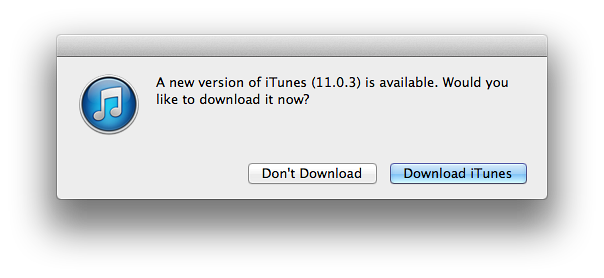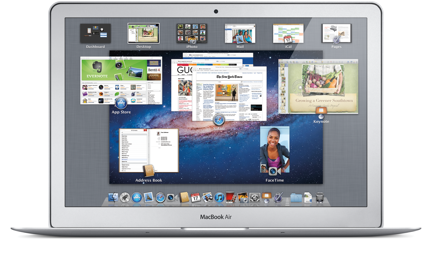Cassandra - WWDC and Expectations

AMITIAE - Friday 17 May 2013
|
Cassandra - WWDC and Expectations |
 |
|
|
By Graham K. Rogers
Opening CommentsAs it is a developers conference, the emphasis is on software, although hardware will figure, depending on Apple's plans. Last year, while the conference was opened by Siri, Tim Cook presided and there was input on hardware and software from Phil Schiller, Craig Federighi and others.
Tim Cook is bound to use this to complement developers and probably discuss the healthy payouts that Apple has made. This is also a perfect opportunity to examine iOS 7. As with past WWDCs this will be the first opportunity for most to have a look at the interface. As is normal, immediately afterwards, Developer versions of the necessary software - including any new APIs - will be made available. The following days will be critical for Developers to become familiar with the new opportunities so that they are on track to release new versions and new apps at the same time as iOS 7 is made available, perhaps some time in September.
iOS and iPhoneThere have been strong rumours coming out of Cupertino concerning the design aspects of the new iOS version. With the removal of Scott Forestall as guiding light in the last 12 months, it is now the responsibility of Jony Ive. While Forestall had a strong affinity for skeuomorphism, Ive prefers a more flat design. Both the Calendar and Contacts apps on OS X had design aspects that jarred with some - leather finish, torn page edges - that are expected to go. Within iOS 7, however, the design of certain other apps, as well as the interface can also expect some form of makeover.There have been numerous requests for changes from users and developers. For example Rene Ritchie of iMore has suggested a separate Files app on several occasions. This would simplify handling of files, which currently works only with a limited app selection (photos with imaging apps, documents with doc apps, etc.).
We shall no doubt hear about the phone, the planned release timetable and the name as well as any special features, or improvements on current features, at WWDC. As I was putting this opinion piece together, Zach Epstien on BGR (with others) had purported shots of new iPhone (5S he calls it) components. He concludes that the external design will remain unchanged, but internally (as with the 4S that many derided) there will be major changes. One of the shots has a coloured SIM tray, adding to the rumour of coloured iPhones [My source for this item was MacDaily News]. I would expect that whatever the next iPhone is called, the camera will be better. Cameras in the iPhone have evolved from the 2 megapixel device in the original iPhone to the 8MP camera in the iPhone 5. Comparisons of the output from the different models were recently made available by Lisa Bettany on Camera+. There have been several rumours, such as components spotted in the wild, that suggest a 12 MP camera will be in the next iPhone. This makes sense in terms of iPhone evolution. I would not expect any change in screen size or dimensions, nor to the resolution. The screen of the iPhone 5 was a fairly big step, but despite analysts and competitors suggesting that a 5" screen is the best size, this is unlikely to be a direction that Apple will take, at least for now. The only other major change could be the removal of the home button, and with the rumoured fingerprint identification this could be used as a substitute. However, Filip Truta on Softpedia makes a claim that an Apple job posting for "a Mechanical Engineer with a broad understanding of materials and manufacturing process such as joining (press lamination, gluing, heat staking)," points to the use of Liquidmetal technology that Apple has invested in. There is a possibility that this might find its way into a new iPhone, but the evidence for a chassis constructed of this is slim [My source for this link was MacDaily News].
Related DevelopmentsClues as to directions Apple may be taking - hard clues, not the wet dreams of Wall Street analysts - may often be found in patents and in job listings, as above. A number of other reports on Apple recruitment have appeared in recent days. MacNN, for example, shows that a number of jobs for iWork development are available.While these may be for the (long-delayed) update to the OS X version, it is expected that the iOS apps (Keynote, Numbers and Pages) which are available separately on iOS devices, will also benefit. AppleBitch also confirms the recruitment and suggests that there may be an announcement at WWDC. Mikey Campbell on AppleInsider adds to the information with a more detailed description of what the jobs may entail, however one particular aspect suggests that the apps are being refined for Retina display devices. One recent patent shows an interesting idea concerns the illumination of a scene using multiple iPhones. The flash with the iPhone is not the best in the world and this synchronising solution - many iPhones, one flash - could be for "impromptu photo shoots that require more than one source of lighting", Mikey Campbell writes on AppleInsider. Another patent, which fits better with current thinking (and with the development already begun with Passbook) concerns an e-wallet concept, that Neil Hughes writes, could suggest payment options based on context. This is a location-based concept that brings up menus on the device that depend on where or how it is being used, suggesting NFC which Apple has so far spurned. It would also be able to manage multiple credit card accounts.
OS X and MacsWhile the iPhone and iOS are sexy, the meat and potatoes of OS X and the Macs that it is installed on, are still an important part of Apple's work. With its lower priority for Wall Street and the bloggers, the rumours have not been as frantic as for iOS. A little careful guesswork may be needed.Snow Leopard is considered to be one of the best versions of OS X, and the most recent version, 10.8 Mountain Lion, included a number of features that were seen as bringing more iOS technology to the desktop. This is in need of a lot of work as certain aspects do not work as well as they should, especially on older Macs or on Macs with 4 GB memory (or less). For good results, current installations tend to work better with 8 GB RAM. That needs bettering.
This may work fine in outer Cupertino, where broadband links are fast and sure. But step outside the major centers of population in the United States, or come to Asia where the internet gateways are controlled by old men, and the experience is vastly different. Safari needs a major rewrite with the way it handles and loads pages.
Also due an update is iPhoto and I am not alone in expecting some improvements with Apple's photo software. Jeff Carlson on MacWorld wrote an article recently about 4 things Apple could do to improve iPhoto right now. Other parts of the iLife suite may also have updates, although as a collection, this is getting a little thin these days. GarageBand and iMovie are core parts of the suite, but iWeb and iDVD are of much less importance. iTunes is treated separately as the updates for this may depend on developments for iOS and its devices. As I write this, so a new version of iTunes (11.0.3) was released with changes to Albums view, a new miniplyer and other fixes.

The other Macs are also due refreshing, if not updating, with priorities being for the iMac and MacBook Pro lines as well as the MacBook Air (not Mac Air as some insist on calling it). The reliable, if unremarkable, Mac mini keeps on going, but needs the occasional bump. Perhaps an OS X update will make that more necessary.
ConclusionsThe work begun on bringing in key iOS features to OS X with Lion and Mountain Lion, should continue, although one hopes that some serious thought has been given to the differences between the needs of a touchscreen computer like the iPad and one controlled by a keyboard and mouse (or touchpad). Launchpad, for example, needs an extra input action compared with the home screen of an iPhone, so is less likely to be the natural way to access apps as a matter of course.

Images produced by courtesy of Apple
Graham K. Rogers teaches at the Faculty of Engineering, Mahidol University in Thailand where he is also Assistant Dean. He wrote in the Bangkok Post, Database supplement on IT subjects. For the last seven years of Database he wrote a column on Apple and Macs. |
|

For further information, e-mail to

|

|